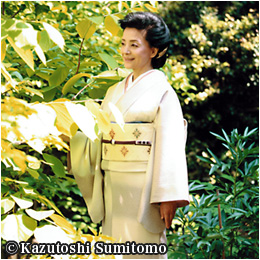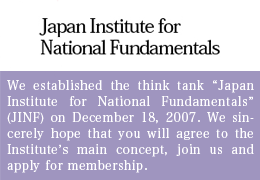The Real Heros Who Saved the Fukushima No. 2 Nuclear Plant
A couple of weeks ago, I visited the Fukushima No. 2 nuclear power plant to find out what made its survival of the March 11, 2011 great earthquake and subsequent tsunami possible. Four nuclear reactors, with a combined generating capacity of 4.4 million kilowatts, were in full operation at the plant on that day. Meanwhile, at the No. 1 plant, which suffered meltdowns and hydrogen explosions on the same day, only three of its six reactors were in operation, generating a combined total of 2,080,000 kilowatts of electricity at the time of the accident. Units 4, 5, and 6 had been shut down prior to the accident.
Had the No. 2 plant suffered the same fate as the No. 1 plant, the damage would have been far more serious. Many surprises awaited me afresh as I toured through the complex, located some 12 kilometers south of the No. 1 plant.
My first surprise was that all of the four units survived the magnitude 9 earthquake in the same way as those at the No. 1 plant did – plenty of proof of the excellence of Japan’s anti-earthquake design. The problem was the tsunami.
In case of an emergency, nuclear power plants must immediately take three basic steps: (1) stop the reactor, (2) cool it, and (3) contain radiation. Step (1) can be achieved by inserting a control rod into the reactor, which causes it to stop automatically. At the No. 2 plant, all of its four reactors stopped properly immediately after they were jolted violently by the powerful earthquake, thus clearing the first hurdle.
At the No. 1 plant, the tsunami caused an immediate power loss, which caused seawater pumps, used to cool reactors, to fail, preventing implementation of step (2). As a result, step (3) failed, as the containment of radiation had become impossible. However, the No. 2 plant somehow managed to restore the cooling system even though the tsunami had damaged the seawater pumps. Steps (2) and (3) were tried again, leading to cold shutdown of all the four units.
Plant chief Naohiro Masuda recalls what happened at the plant on that day:
“There suddenly was an incredibly powerful jolt, which instantly convinced me that we were faced with the greatest crisis ever at our plant; I prepared myself for the worst then and there.”
When the quake hit, all the staff at the plant’s control center promptly held on to the handrails of the instrument panels, barely preventing themselves from being thrown to the floor – a lesson learned from the experience of the earthquake which rocked the Kashiwazaki-Kariha nuclear power plant in 2007 in Niigata Prefecture. (This plant is also managed by the Tokyo Electric Power Company. which runs the No. 1 and No. 2 plants in Fukushima.)
With power off, an alarm echoed around the spacious plant. It lost the ability to cool the reactors. In the middle of the night on March 11, after confirming the safety of his staff, Masuda directed them to conduct what he described as a “walk-down” across the plant’s premises. The purpose was to ascertain what machinery might still be usable, while determining where to launch restoration work in order to efficiently restore the plant’s cooling system in the shortest time possible. Explained Masuda:
Roars of Applause and Cheers
“It was pitch dark outside, with the temperature having dropped below zero degrees centigrade. With tsunami warnings sounding incessantly, all of us felt our way. The operation certainly needed courage as we circled around the reactor buildings, examining the extent of damage. There was virtually no space left for us to put our feet, with the debris of damaged cars and buildings blocking our way across the premises. I am grateful that my staff truly did the best they could under such dangerous circumstances. ”
It quickly became clear that the No. 2 plant urgently needed an electric motor, power cables, a vehicle-mounted generator, and a portable transformer, among other things. Masuda determined to obtain an electric switch motor from Toshiba’s Mie plant. And, since it had to be rushed by air, Masuda took immediate steps to contact the Japan Self Air Defense Force for assistance without a moment of hesitation. He also asked the Kashiwazaki-Karita nuclear plant to arrange for some of the urgently needed equipment to be delivered by land. A long day for Masuda was finally over on March 12 – the day after the disaster – when he finally completed procuring all of the needed equipment, bearing in mind throughout the ordeal that he and his men must remain committed to safeguarding their plant, as well as the local community – and Japan for that matter.
The series of prompt actions taken by Masuda that day resulted from a precise grasp of the critical situation on the part of all the men at the plant who strove as one to conduct the “walk-down” in the pitch dark.
The following day, March 13, the damaged electric motor was replaced and the high-voltage vehicle-mounted generator and portable transformer were delivered. However, the plant had lost all of the vital cables connecting the machinery and the cooling system. The cables had to be installed anew. Everybody at the No. 2 plant, as well as all of the employees from related corporations, concentrated on the operation. The bundles of cable were so thick that a man couldn’t get even two hands held together around them, and they were so heavy that they cut into the men’s shoulders as they carried them.
“We carried the cables by posting our men at an interval of two meters,” continued Masuda. “Starting with the power panel, we managed, within a matter of a day, to install the cables over a length of some 9 kilometers, circling around the Reactor 1 building and the turbine buildings and reaching the four seawater pump buildings for each of the reactors located closer to the shore. With the cables thus installed and power restored, the cooling system began functioning again, and everybody applauded. The units’ temperature began to drop, and we managed to achieve cold shutdown for all of the units by March 15.”
Masuda talked in even tones. However, there is no question each of the men on the scene was burning with a sincere sense of mission at every moment of the entire operation, eager to make his contribution. That is why, when each phase of the operation was completed with the desired results, there was a storm of applause and cheers.
While claiming that he and his men had done their very best in all of the work related to the restoration of the No. 2 plant, Masuda nevertheless admitted having much to reflect on in terms of what went wrong on March 11 and what needs to be done differently if a similar disaster were to strike again in the future.
“After the tsunami subsided, we had to first remove the debris on the premises by using backhoe loaders and tractors in order to bring in the vehicle-mounted generator. We also had to be able to operate a forklift in order to unload the electric motor and transformer from the truck. However, we could not unload them immediately because none of TEPCO’s employees carried a forklift operator’s license. And it was equally difficult to find someone who had such a license among the employees of related corporations. Frankly, I was extremely agitated. Reflecting on such a bitter experience, TEPCO employees have been studying very hard, and the result is that all of us are now capable of operating those vehicles. I genuinely feel that, in view of the nature of our business, we must never fail to train ourselves to achieve the ability to perform any task satisfactorily in preparation for an emergency.”
Praise from Experts
These steady efforts made by TEPCO employees are little recognized in today’s society, which tends to be tainted to be anti-nuclear sentiments.
Walking into the plant chief’s living quarters after a tour of the plant’s facilities, I caught sight of a cot in one corner and was surprised to learn that Masuda has been living here for over 20 months following the March 11 disaster. When I looked at the cot, it struck me as a little strange, and then looking closer I could see a wooden board had been laid over the cot and a simple bed mat placed on top of the board. Explained Masuda with a wry smile:
“I’ve been sleeping on this cot for such a long time that its middle part collapsed some time ago. The local people felt sorry for me, so they’ve brought in this wooden board, on which the bed mat is now sitting.”
A sense of admiration combined with respect filled my heart as I heard him say this, and it reminded of the tributes received from some of the world’s nuclear specialists concerning the No. 2 plant.
Allison Macfarlane, Chairman of the United States Nuclear Regulatory Commission, called the men at the No. 2 plant “real heros,” noting they utilized their knowledge under extremely difficult conditions and at great personal risk to help maintain the safety of the plant while trying to get it back on life. Equally laudatory was Amir Sharkarami, Senior Vice President of Exelon Corporation, the largest power generator in the US. Sharkarami said he was proud of all of the men at the No 2 plant, including those from related corporations, who “worked without sparing time for sleep for days” to get the plant back on line, achieving cold shutdown “in such a short time.” He added that he was thankful to “everyone at the No. 2 plant for giving the world’s nuclear industry ‘such a fine example.’” To take these remarks simply as perfunctory praise from professionals in the same field would be too narrow-minded.
The selfless, life risking efforts on the part of the employees of TEPCO and related corporations to save the No. 2 plant tend to be overlooked because of the magnitude of the tragic accident at the No. 1 plant. However, I believe most strongly that the success story of the people at the No. 2 plant, marked by their selfless efforts, courage, and wisdom, must definitely be told.
I personally wish to send my respect and thanks from the heart to those silent heros who have been working wholeheartedly with Masuda – hand in hand, day and night – determined to commit themselves to the safer operation of the No. 2 plant.
(Translated from “Renaissance Japan” column no. 545 in the February 14, 2013 issue of The Weekly Shincho)








